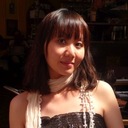Although Luxo, Sr. is a male/father, he is actually based on John Lasseter's mother.
Fantasia - Trivia, Questions and Fun Facts
-
The filming of the final "Ave Maria" sequence was plagued by mishaps. To achieve the effect of moving through the scene, several panes of painted glass were used. The whole setup was over 200 feet long and had to be redone three times. The first time the wrong lens was placed on the camera, and the subsequent film showed not only the artwork but the workers scurrying around it. The second time around an earthquake struck the studio, and the shot was once again scrapped. The next morning the shot was redone, the film was shipped to the lab, processed and couriered to the premiere in New York where it was spliced into the final print with only four hours to spare.
-
Some of the dances in "Fantasia" which are used to accompany the "Nutcracker Suite" (1892) are inspired by characters appearing in the ballet "The Nutcracker" (1892) . Including the "Dance of the Sugar-Plum Fairy", which is named after a specific character.
-
The first feature film to be shown in multichannel sound. The original prints featured soundtracks that were recorded in a process known as Fantasound, a four-track directional stereophonic system that was invented especially to record the soundtrack for the film by RCA and the Walt Disney Studios technical team, led by William E. Garity. The Leopold Stokowski-conducted orchestra audio was recorded onto eight separate soundtracks (six channels recorded individual sections of the orchestra, the seventh recorded a mix of the first six channels and the eighth recorded a distant pickup of the entire orchestra), which were then mixed down to three tracks (left, center and right). The three music tracks were optically matted with a fourth control track (containing signal tones that varied the speaker dynamics) onto a filmstrip separate from the projector print. Over 90 speakers were used for the playback of the Fantasound audio during the premiere of the film on 12 November 1940. A more typical Fantasound setup used three speakers behind the screen and 65 others placed around the other three walls of the theater. However, Fantasound was discontinued due to the amount of sound equipment required and the time necessary to make the installation. The advent of wartime conditions also precluded the possibility of developing mobile units that could have lessened installation time and costs. Therefore, only 12 venues ever played the original Fantasound version of the film, and only 16 Fantasound-equipped prints were ever created. When RKO took over distribution for the roadshow version in January 1941, the film was shipped with a conventional monaural track. Disney technicians recreated Fantasound for the 50th Anniversary release in 1990 using modern digital technology and the original sound cues from the Disney archives, and this mix was encoded into the subsequent VHS and laserdisc releases. This mix is active, and even aggressive at times, with music swirling or jumping around the room. However, the DVD's mix sounds considerably different. While no official verification can be found that it was changed, the DVD's surround mix is more passive, with the music in the front channels and only concert-hall reverb in the rear channels. The sound is cleaner, but it is not Fantasound as it was described in 1940 and as it appeared in 1990.
-
A segment featuring Claude Debussy's "Clair de Lune" was animated and intended as part of the original release but cut due to the film's already excessive length. "Clair de Lune" was reworked and rescored as the "Blue Bayou" sequence in Make Mine Music (1946). A restored version of the original "Clair de Lune" sequence, released in the 1990s as a stand-alone short, can be found on the "Fantasia Legacy" supplemental DVD. The framing Leopold Stokowski footage for the segment could not be found, however, so the sequence is framed by recycled footage from the "Toccata and Fugue" segment.
-
The Centaurettes featured in the "Pastoral Symphony" segment are considered a peculiar innovation, as female centaurs are not featured in ancient myths. Consequently, they were also a rare theme in art. However, the Disney idea has its own origins. Disney concept artist Albert Hurter (1883-1942) was seeking images of centaurs to use as references of Fantasia. He found rare images of female centaurs in the works of German artist Franz Stuck (1863-1928). Stuck specialized in works inspired by mythology but interpreted it in unique ways. Some of his ideas were adapted by Hurter.
Fantasia - Trivia, Questions and Fun Facts
Fantasia - Trivia, Questions and Fun Facts
Fantasia - Trivia, Questions and Fun Facts
Fantasia - Trivia, Questions and Fun Facts
Fantasia - Trivia, Questions and Fun Facts
Make a Post or Browse
Recently added
© DiscussIMDB, All rights reserved. DiscussIMDB is not affiliated with IMDb







